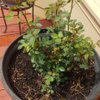How much store do you put in photos of roses?
prairiemoon2 z6b MA
10 years ago
Related Stories

ARTLet's Put a Price on Art: Your Guide to Art Costs and Buying
We paint you a picture of what affects an artwork's price — plus a little-known way to take home what you love when it's beyond your budget
Full Story
FALL GARDENING5 Ways to Put Fall Leaves to Work in Your Garden
Improve your soil and yard the organic way with a valuable garden booster that grows on trees
Full Story
MORE ROOMSTech in Design: Where to Put Your Flat-Screen TV
Popcorn, please: Enjoy all the new shows with a TV in the best place for viewing
Full Story
GARAGESHouzz Call: How Do You Put Your Garage to Work for Your Home?
Cars, storage, crafts, relaxing ... all of the above? Upload a photo of your garage and tell us how it performs as a workhorse
Full Story
ORGANIZINGPre-Storage Checklist: 10 Questions to Ask Yourself Before You Store
Wait, stop. Do you really need to keep that item you’re about to put into storage?
Full Story
LIFEYou Said It: ‘Put It Back’ If It Won’t Help Your House, and More Wisdom
Highlights from the week include stopping clutter from getting past the door, fall planting ideas and a grandfather’s gift of love
Full Story
KITCHEN DESIGNPut Your Butler's Pantry to Work
You may not have a butler in your home, but a separate prep and serving area will make hosting a breeze
Full Story
KITCHEN DESIGNWhere Should You Put the Kitchen Sink?
Facing a window or your guests? In a corner or near the dishwasher? Here’s how to find the right location for your sink
Full StorySponsored
Leading Interior Designers in Columbus, Ohio & Ponte Vedra, Florida
More Discussions












prairiemoon2 z6b MAOriginal Author
Kippy
Related Professionals
West Milford Landscape Architects & Landscape Designers · Chattanooga Landscape Architects & Landscape Designers · Richmond Heights Landscape Architects & Landscape Designers · Salem Landscape Contractors · Ashburn Landscape Contractors · Cockeysville Landscape Contractors · Hendersonville Landscape Contractors · Huntington Landscape Contractors · Old Saybrook Landscape Contractors · Pahrump Landscape Contractors · Riverview Landscape Contractors · Saint John Landscape Contractors · Seminole Landscape Contractors · St. Louis Landscape Contractors · Woodbury Landscape Contractorsjim1961 / Central Pennsylvania / Zone 6
prairiemoon2 z6b MAOriginal Author
User
roseseek
prairiemoon2 z6b MAOriginal Author
sandandsun
User
hoovb zone 9 sunset 23
prairiemoon2 z6b MAOriginal Author
jerijen
dublinbay z6 (KS)
roseseek
dublinbay z6 (KS)
roseseek
ingrid_vc so. CA zone 9
AquaEyes 7a NJ
roseseek
prairiemoon2 z6b MAOriginal Author
dublinbay z6 (KS)
prairiemoon2 z6b MAOriginal Author
jim1961 / Central Pennsylvania / Zone 6
seil zone 6b MI
dublinbay z6 (KS)
roseblush1
prairiemoon2 z6b MAOriginal Author
dublinbay z6 (KS)
roseblush1
Tessiess, SoCal Inland, 9b, 1272' elev
roseseek
Kippy
Tessiess, SoCal Inland, 9b, 1272' elev
sandandsun
sandandsun
seil zone 6b MI
User
prairiemoon2 z6b MAOriginal Author
jim1961 / Central Pennsylvania / Zone 6
prairiemoon2 z6b MAOriginal Author
prairiemoon2 z6b MAOriginal Author
hoovb zone 9 sunset 23
SouthCountryGuy Zone 4b-5 SE BC
prairiemoon2 z6b MAOriginal Author
jerijen
Kippy
roseblush1
roseseek
prairiemoon2 z6b MAOriginal Author
prairiemoon2 z6b MAOriginal Author